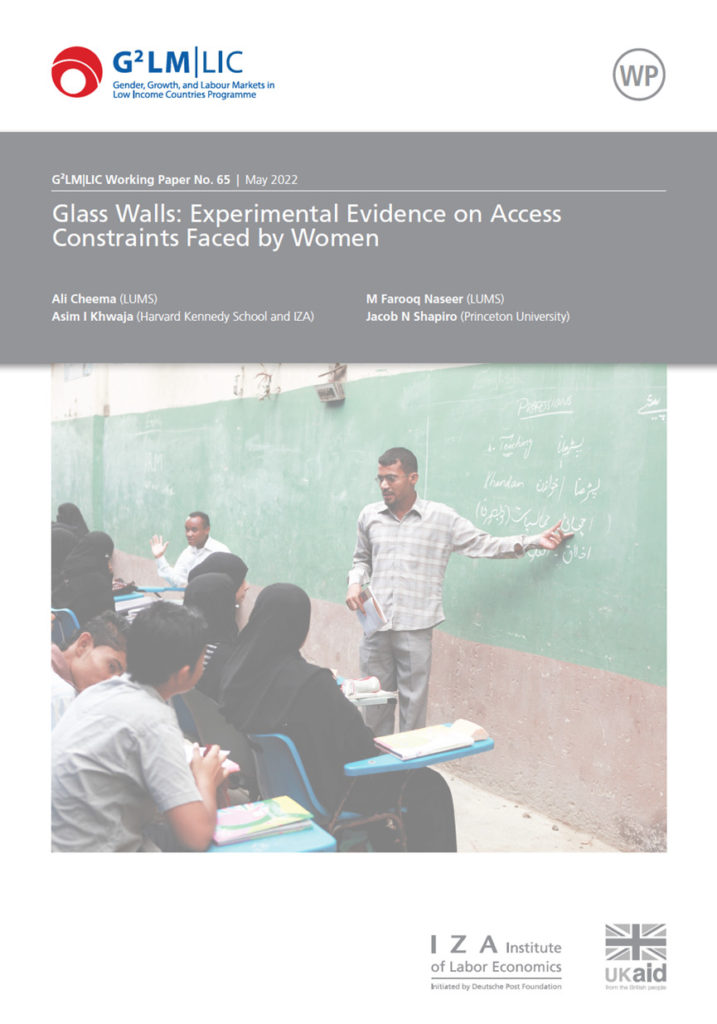
Diverse approaches and experiments in the economic literature have shown that offering subsidies and making certain services available do no result in a take-up at an expected scale when targeting those that have been historically excluded from government programmes. Although calculations often have left the non-take-up cases out arguing that whenever subsidies are of the right size such access constraints become less of a concern, there is a growing interest in analysing the nature of such constraints to understand and address them better.
This paper follows such a research motivation and analyses the nature, form and extent of such an access constraint, namely the travel that requires a woman to move outside her community. Studying a skills development program in Pakistan, researchers make use of differences in the size of the constraint to analyse the corresponding take up. They find that distance is indeed strongly related with a reduced take-up of the program, but more strikingly that the boundary of a village is the distance-feature that deems the most effect on the low take-up rates. It appears that the imaginary boundary of the village poses the highest constraint for women even though in terms of distance, there is no form of discontinuity induced by such a border. Read the detailed Working Paper here.